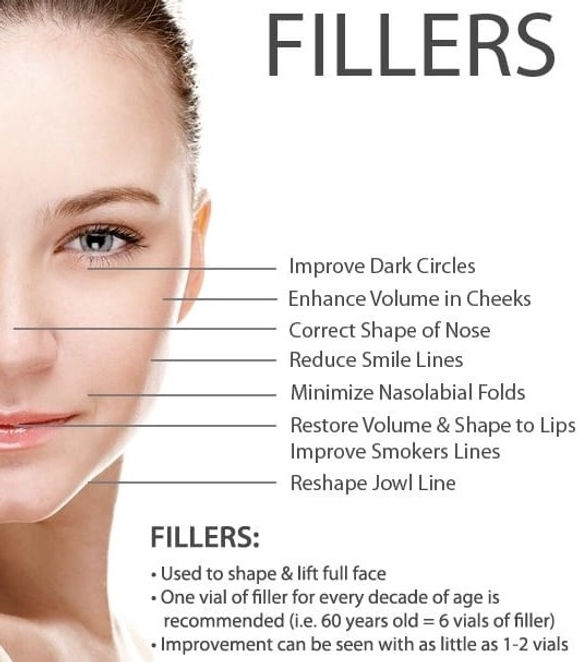
Botox & Dermal Filler
Providing Everything You Need
Botox is a prescription treatment that uses botulinum toxin, a purified protein, to temporarily improve the appearance of moderate to severe frown lines, crow's feet, and forehead lines in adults. It works by blocking nerve signals to the targeted muscles, preventing them from contracting and causing wrinkles. Botox is also used for various medical conditions, including migraines, excessive sweating, and certain eye muscle problems.
Here's a more detailed look:
-
Cosmetic Uses:
Botox is primarily known for its cosmetic use in reducing wrinkles by relaxing the muscles that cause them.
-
Medical Uses:
Beyond wrinkles, Botox is also used to treat conditions like:
-
Migraines: Botox injections can help reduce the frequency and severity of chronic migraines.
-
Hyperhidrosis: Botox can be injected into sweat glands to reduce underarm sweating.
-
Eye Muscle Disorders: Botox can treat conditions like strabismus (crossed eyes) and blepharospasm (uncontrollable blinking).
-
Cervical Dystonia: Botox can help manage neck and shoulder muscle contractions associated with this neurological disorder.
-
Overactive Bladder: Botox can be used to relax bladder muscles and reduce urinary incontinence.
-
-
How it Works:
Botulinum toxin blocks nerve signals to the muscle, preventing it from contracting. This relaxation leads to a temporary smoothing of wrinkles.
-
Procedure:
The treatment involves a licensed professional injecting a small amount of Botox into the targeted muscles. The procedure is typically quick, with minimal downtime.
-
Side Effects:
Common side effects include bruising or redness at the injection site. More serious side effects are rare but can include muscle weakness, difficulty swallowing or breathing, or vision problems.

Dermal fillers are substances injected under the skin to add volume, plump up areas, and reduce the appearance of wrinkles and lines. They are commonly used for facial rejuvenation, lip augmentation, and improving the appearance of scars and sunken areas. The results of dermal fillers can last from a few months to several years, depending on the type of filler and individual factors.
Here's a more detailed look at dermal fillers:
Types of Fillers:
-
.Opens in new tab
These are the most common type, as they are naturally found in the body and are biodegradable. Examples include Restylane, Juvéderm, and Belotero.
-
Calcium Hydroxylapatite Fillers:
.Opens in new tab
These fillers are made from a mineral-like substance found in bones and can provide more long-lasting results than HA fillers.
-
.Opens in new tab
This filler is a synthetic material that stimulates collagen production, leading to longer-lasting results.
-
Less common types include polymethyl methacrylate (PMMA) and collagen.
Applications:
-
Wrinkles and Lines:
Dermal fillers can smooth out wrinkles, lines, and folds, such as nasolabial folds (lines from the nose to the corners of the mouth) and marionette lines (lines from the corners of the mouth to the chin).
-
Lip Augmentation:
Fillers can enhance lip volume and shape, providing a fuller and more defined appearance.
-
Cheek Enhancement:
Fillers can add volume to the cheeks, creating a more youthful and contoured appearance.
-
Undereye Hollows:
Fillers can smooth out and reduce the appearance of dark circles and hollows under the eyes.
-
Scars and Depressions:
Fillers can help to minimize the appearance of acne scars and other skin depressions.
-
Hand Rejuvenation:
Fillers can restore volume and reduce the appearance of wrinkles on the hands.
Procedure:
-
Consultation:
A consultation with a qualified and experienced practitioner is essential to discuss your goals and determine the appropriate type and amount of filler.
-
Injection:
The procedure typically involves injecting the filler into the desired area using a thin needle or cannula.
-
Aftercare:
After the procedure, it's important to follow the practitioner's instructions for aftercare, which may include applying ice packs and avoiding strenuous activity.






